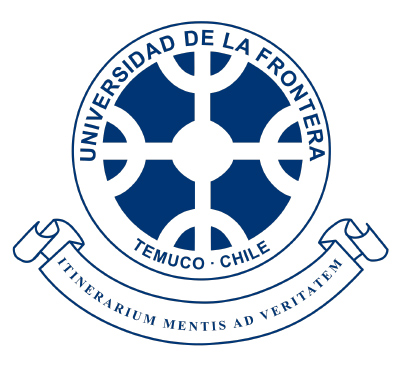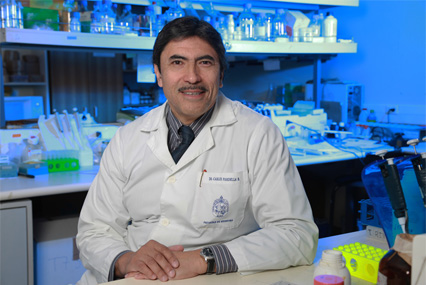RESEARCH LINES:
Our research began more than a decade ago and is intended to evaluate mechanisms and genes potentially involved in the onset of hypertension and metabolic syndrome. In developing this line it has been essential to obtain Fondecyt, Fondef, Millennium and Consorcio-BRMC project grants.
Our studies in arterial hypertension have led the way by exposing two diseases which account for about 20% of hypertension cases, these are primary hyperaldosteronism (PHA) and the deficit in the enzyme 11β-dehydrogenase type 2 hidroxiestroide (11BHSD2). In patients affected by HAP and enzyme deficiency 11BHSD2 hypertension is secondary to the activation of the mineralocorticoid receptor by aldosterone and cortisol respectively. In the case of enzyme deficiency 11BHSD2 the cortisol is not converted to inactive cortisone and then permits the activation of the mineralocorticoid receptors, triggers the same effect as aldosterone its specific ligand. The HAP as well disturbance in 11BHSD2 enzyme has been shown to generate damage to cardiac and cerebrovascular level independent of increased the blood pressure. Therefore only treating hypertension does not stop the damage in other organs, making mandatory the etiological treatment. This is due to these diseases induce damage by increasing oxidative stress and vascular inflammation at endothelial level as has been demonstrated by our group. We have also shown that many children are already hypertensive and present similar disorders to those detected in adults, which becomes more important because this group of patients can be diagnosed earlier preventing the cardiac and cerebrovascular complications. In addition, as discussed in our publications, we have demonstrated how aldosterone can induce changes in the immune system, the observation that aldosterone can promote CD4þ T-cell activation and Th17 polarization suggests that this hormone could contribute to the onset of autoimmunity. Finally, we have made progress in the molecular genetic study of these diseases, which allowed us to identify affected families and genetic counseling.
Metabolic syndrome affects about 30% of the world population and is defined by the co-existence of central obesity, hypertension, impaired glucose and dyslipidemia. According to studies by our group, there is strong evidence suggesting that alterations in cortisol metabolism may predispose to the development of metabolic syndrome, through changes in local cortisol levels. In recent years we have identified that the overexpression of 11beta-hydroxysteroid oxidoreductase dehydrogenase type 1 (11B-HSD1) regenerating cortisol from cortisone locally (adipose tissue, liver, brain, etc.) is associated with the development of metabolic syndrome. Moreover, its specific inhibition has been shown to attenuate some of the signs and symptoms of hypertension, dyslipidemia, and insulin resistance in animals and clinical trials of metabolic syndrome models. We recently reported that 11B-HSD1 enzyme is over-expressed in liver and visceral adipose tissue of obese patient, increasing the cortisol production at the visceral adipose tissue. This increased production of cortisol is not observed at the systemic level, because it is metabolized in the liver and excreted in the urine as cortisol, cortisone tetrahydrometabolites (THF, a-THF, THE). In addition, we have shown that the increases of these tetrahydrometabolites are associated with metabolic syndrome and also with each of its components, supporting our hypothesis of a local hypercortisolism in the genesis of metabolic syndrome. Moreover, we have developed and validated a method for simultaneous detection of these steroids in urine by liquid chromatography coupled to mass spectrometry (HPLC-MS / MS). This method is also used for the analysis of steroid in culture supernatants of cell lines (eg. Human adipocytes LS-14), allowing the biological evaluation of potential inhibitors of 11B-HSD1 enzyme. Pharmacological inhibition of 11B-HSD1 has been previously validated as a therapeutic target however; none compound is commercially available for use in clinic. Currently, our group has been active in identifying inhibitors of this enzyme, using a methodology that combines the most modern tools of computer-aided design, molecular and cellular biology drugs. This strategy has identified four compounds that are in the process of patenting that could serve as assets for the development of oral medications with no or minimal deleterious effects. These compounds will be marketed to the pharmaceutical industry, who will complete the clinical trials.






